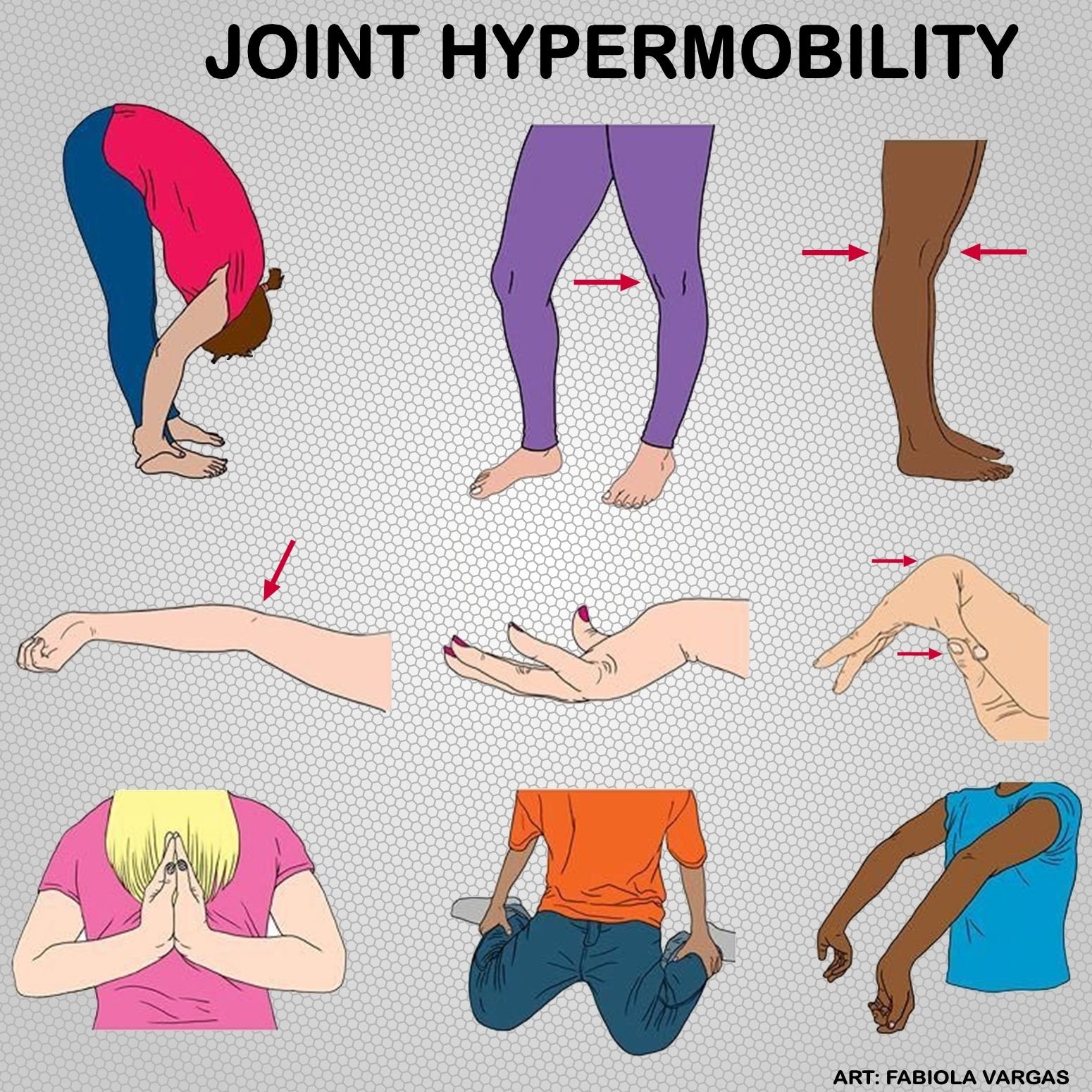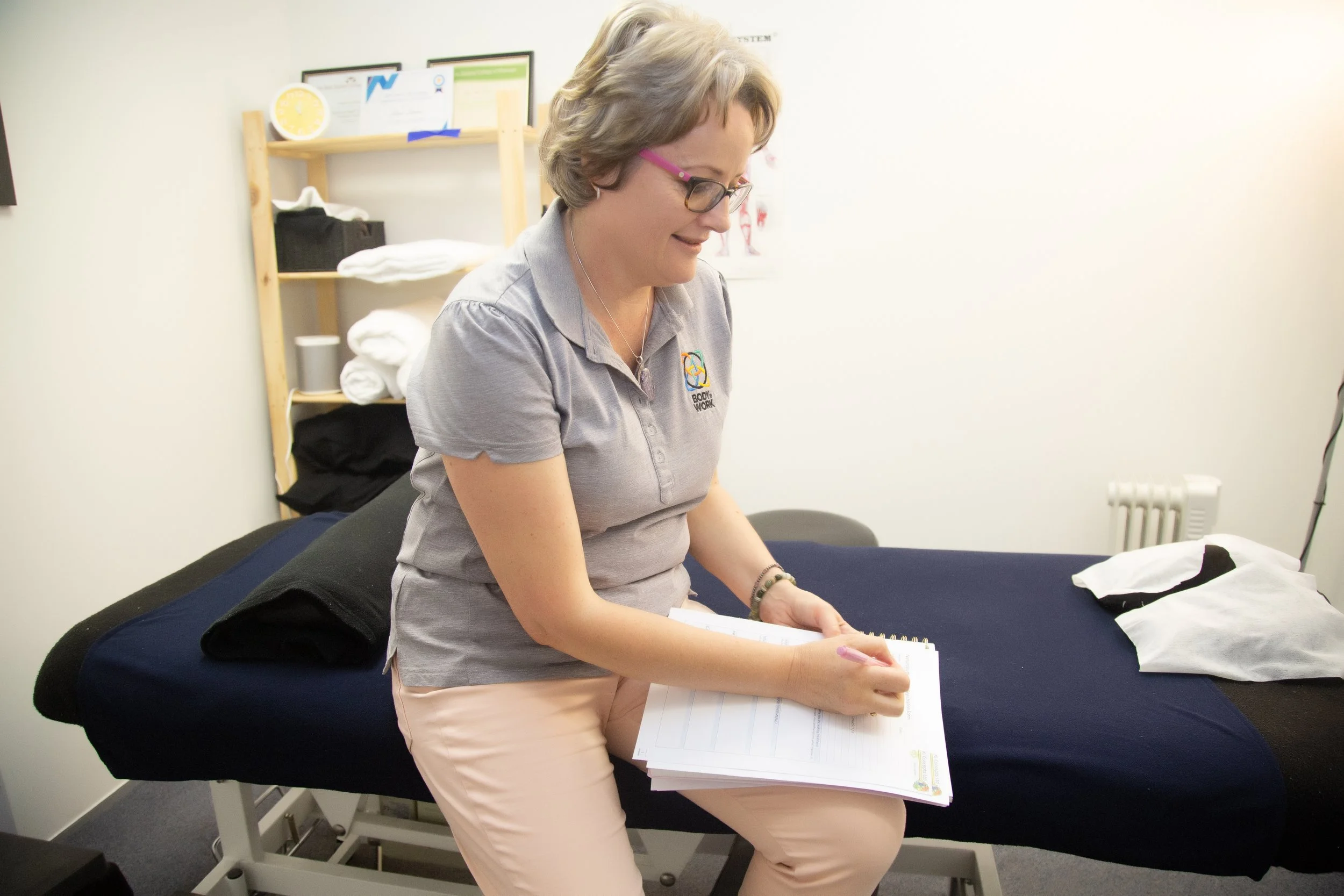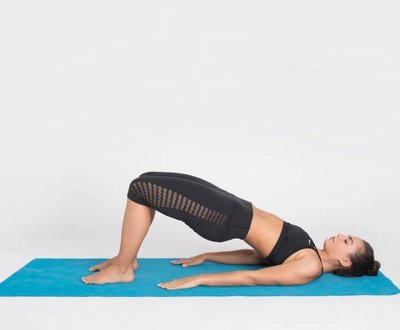The hips and pelvic floor are intimately interconnected muscle systems. Here are some practical exercises to help mitigate the symptoms of pelvic organ prolapse and associated hip pain.
Hip Mobility and Why it Matters
Hip mobility is the ability of the muscles of the hips to move through a full range of motion under a variety of loads; hip flexibility refers to the passive range of motion of the hips. The muscles surrounding the hip joints are crucial for many movements, including most activities of daily living–walking, standing, finding comfortable seated positions, etc. The hips are responsible for stabilizing the pelvis as we move, and help facilitate single-leg movements and balances. Hip mobility and strength are also important to pelvic floor function.
Hip mobility and prolapse
Pelvic organ prolapse is an injury where one or more of the pelvic organs “drop” from their normal position. Though bladder prolapse is the most common, any pelvic organ (bladder, uterus, rectum) can make the descent. This injury happens for a variety of reasons: birth injury, core and pelvic floor muscle imbalances, postural misalignments and excess intra-abdominal pressure are all reasons one might sustain a prolapse.
Hip mobility and pelvic health
A pelvic prolapse rehab program needs to look at the whole body, and especially the muscles surrounding the pelvis and core. Just like the core is not only the visible abs, the pelvic floor is influenced by everything that attaches to the pelvis and the the pelvic floor muscles. Instead of thinking of pelvic organ prolapse as a problem just of the organ involved, we need to look at the whole system that’s causing the organ to be moved out of place.
Hip mobility is an important factor in many aspects of everyday movement: it facilitates walking, bending, squatting, and sexual intercourse, among many, many other movements. Tying your shoes, or getting up and down from chairs or the toilet involves a squatting movement pattern. If getting up and down from the floor is difficult, working on acquiring more mobile hips can help. As your hips are helping you move through all of these things, they’re also having an influence on your pelvic floor. If your hips can’t make space for your body, your body will make space for itself in any way it can–including with excessive intra-abdominal pressure.
Intra-abdominal pressure and prolapse
What is excessive intra-abdominal pressure? Imagine the whole core system (including the pelvic floor and diaphragm) as a balloon, and picture squeezing the top of the balloon. The bottom of the balloon pushes out and down. This is a very oversimplified version of how intra-abdominal pressure works. Intra-abdominal pressure isn’t inherently bad. It’s part of the breath system. But when we’re already holding tension in the core or pelvic floor, then excessive downward pressure can make a situation like prolapse worse. If the hips are freed up to do their job properly so that movements require less strain overall, we can reduce the pressure on the abdomen.
Exercises for Improving Hip Mobility
Standing Exercises:
Standing side bend:
Stand and cross one leg behind you
Reach up with the front arm and side bend
Hold for a few breaths to get length in the waist
Do both sides, noticing the difference between each side.
Pelvic list:
Step up on a block so that the heel is at the back of the block
Push down through the heel in order to elevate the floating leg
Hold with feet even, or make it more dynamic by moving up and down
Use a wall or chair for balance as needed.
Lunge with a hip shift to the side:
Come into a high lunge with the back foot on the floor (ok if the back foot turns out slightly)
Slide the front hip to the side without shifting the ribs
Then slide back to neutral
Repeat 4-5 times per side
Can also perform this next to a wall so that the wall becomes the target.
Seated/all fours exercises
Kneeling hip shifts:
Kneel with one leg stretched out to the side
Place hands on blocks or a chair or the floor (depends on what your body needs!)
Keep spine neutral and shift hips back toward the heel of the kneeling leg
Move forward and back 4-5 times per side.
Kneeling hip abduction:
Come into a kneeling side lunge with the torso upright.
Shift the hips toward the lunging leg
Repeat 4-5 times, then switch sides.
Sitting on a chair & shifting hips:
Sit on a chair with feet flat on the floor and sitbones under you.
Alternate sliding each knee forward and back, initiating the movement from the hips.
Keep the torso still.
Lifestyle Changes and Preventative Measures
Lifestyle changes can help improve hip mobility and prevent prolapse.
While in the healing phase, it is best to avoid lifting loads that are heavier than the body can tolerate. Our bodies crave novelty, so work to find alternative working or sitting positions can be helpful for preventing further prolapse.
Integrating regular, shorter movement breaks into the day can be helpful. Sometimes a longer workout session will make the prolapse feel worse, especially if it involves a great deal of standing. It is good to work with a professional to find ways to move that support your healing.
Additional preventative measures to avoid exacerbating hip pain and prolapse symptoms.
It’s important to focus on the quality of movements rather than increasing intensity too quickly. It is important to remember that healing isn’t linear, but that it is possible.
FAQ’s
1. What is hip mobility and why is it important for pelvic health?
Hip pain is often a symptom of both pelvic organ prolapse and other pelvic floor dysfunction. The muscles of the hip connect to the muscles of the pelvic floor, and many people suffering from symptoms of pelvic floor dysfunction find that they benefit from hip mobility work.
2. Can a prolapsed uterus directly cause hip pain?
There is no evidence that a prolapsed uterus alone can directly cause hip pain, but the conditions that caused the prolapse may also be the cause of hip pain.
3. How often should I perform hip mobility exercises for prolapse management?
In general, 3-5 days a week while you’re in the healing phase is sufficient.
4. What lifestyle changes can aid in improving hip mobility and reducing prolapse symptoms?
Give your body plenty of varied input, including rest and exercise. Change up the positions you sit and stand in throughout the day.
5. Are there any risks associated with hip mobility exercises for someone with pelvic prolapse?
As with most exercises when pelvic organ prolapse is present, you’ll want to learn to listen to your body and not overdo things. Pay attention to when your body seems to tense up unnecessarily, or when you feel yourself straining too hard to perform an exercise. Back off, and try again another day.
6. How can I track my progress with hip mobility exercises in relation to prolapse symptom relief?
Just like you would track any other progress: how do you feel? Are your symptoms getting better, worse, or staying the same? If you’ve just started adding a new move into your routine, don’t be surprised if your symptoms flare for a day or two–but DO back off the intensity and check your movement strategy.































